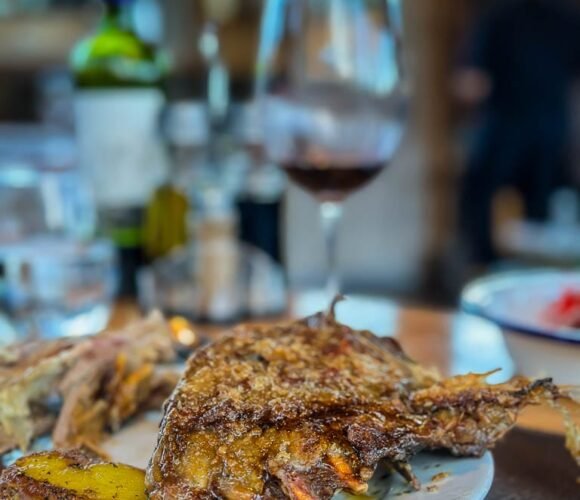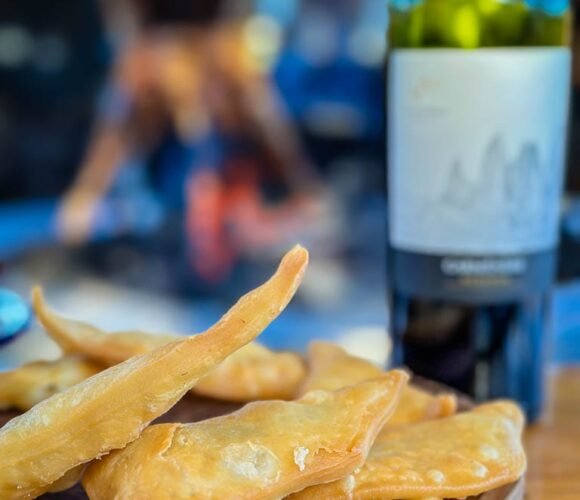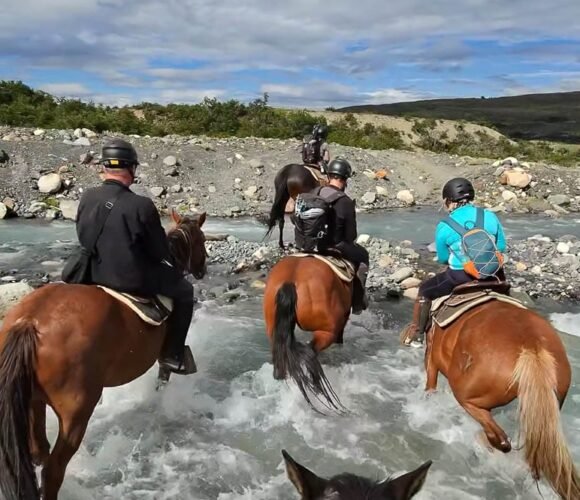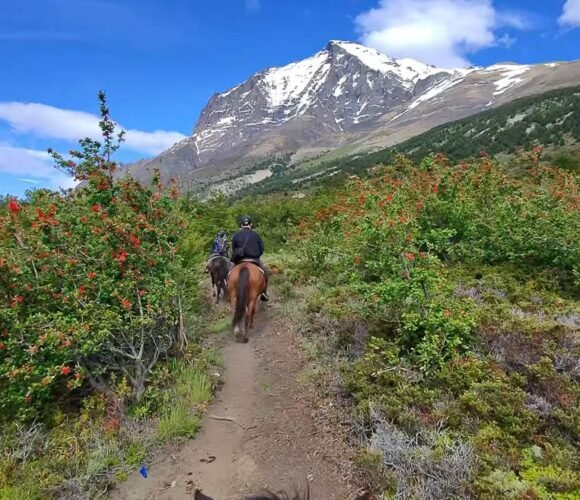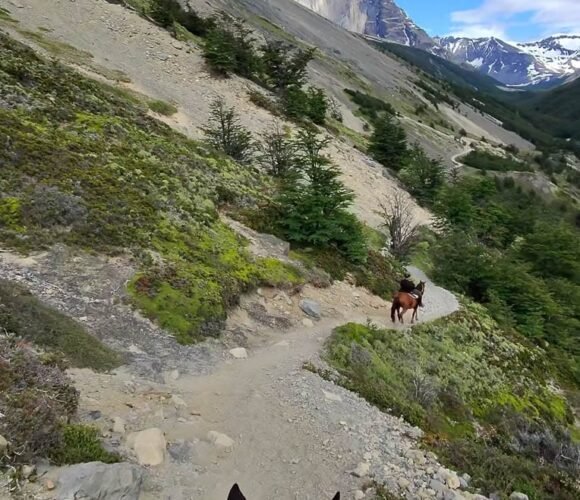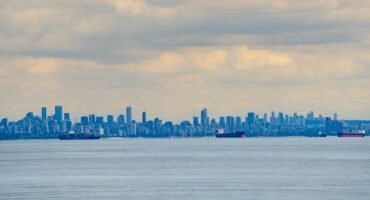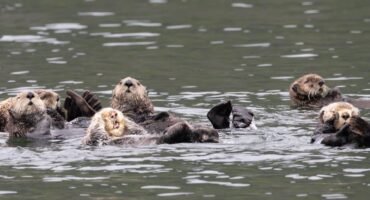
Hotel Las Torres – Horseback Riding and Hiking to the Base of Las Torres
Hotel las Torres
Torres del Paine, located in southern Chilean Patagonia, is a breathtaking national park known for its dramatic landscapes. The park features towering granite peaks, vast glaciers, crystal-clear lakes, and sweeping grasslands. Its iconic centrepiece is the three jagged granite towers (“Torres”) rising above turquoise glacial lakes.
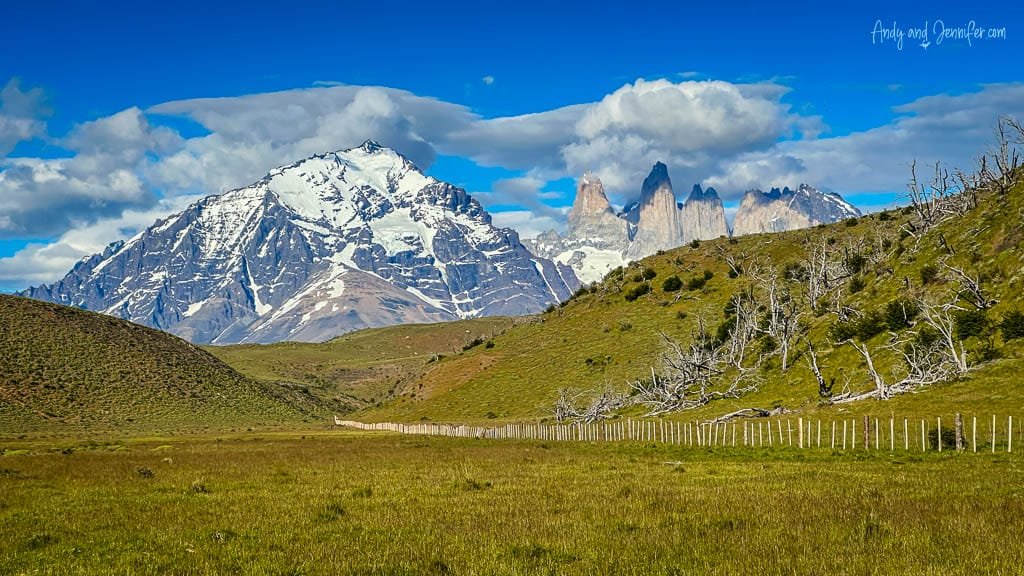
Despite booking almost nine months in advance, we couldn’t secure seven consecutive nights at the same lodge. Patagonia’s prices are astronomical—there were several please where I initially thought the rate was for a week, but it turned out to be per night, per person! We ended up splitting our stay: three nights at Hotel Las Torres, where we stayed last year, followed by four nights at EcoCamp Patagonia.
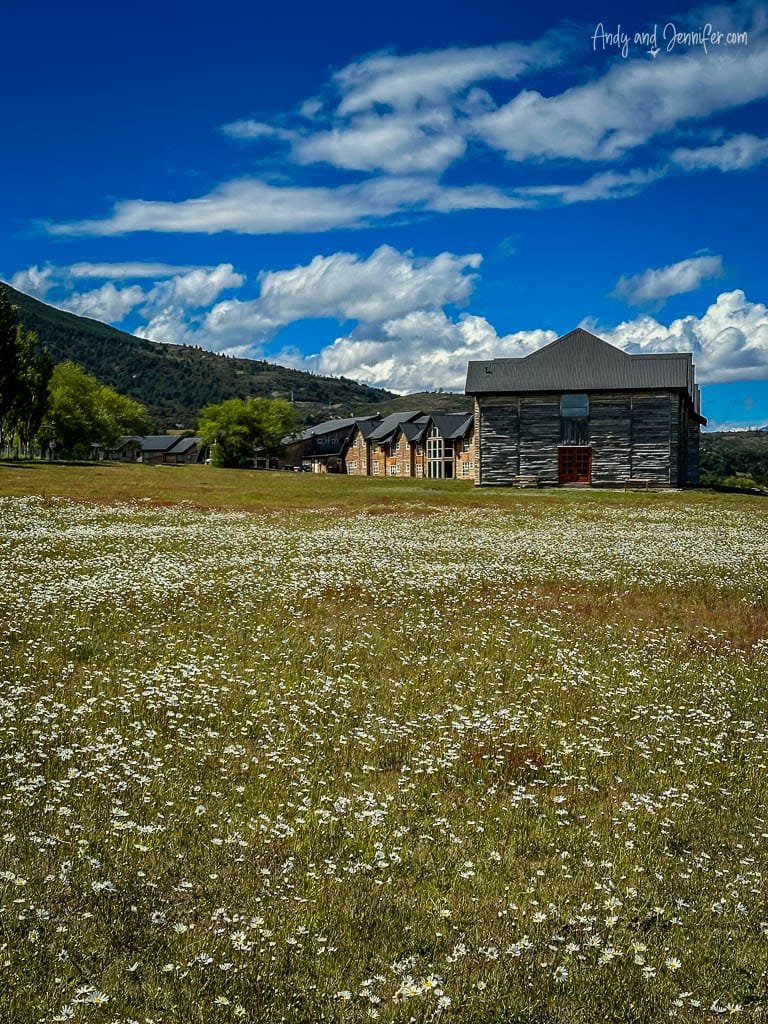
Hotel Las Torres is all-inclusive, offering meals and as many tours and activities as you can squeeze into a day. Since we had our own car and had visited before, we opted for the half-board plan, which included meals but excluded activities.
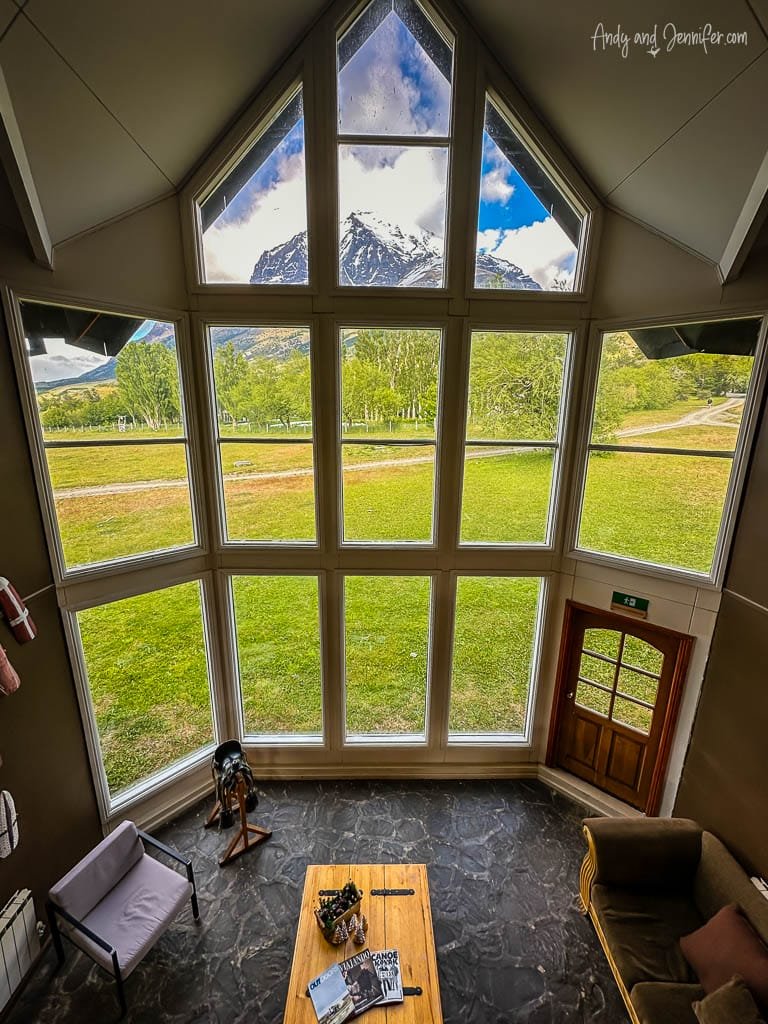
The meals at Hotel Las Torres were outstanding. Mornings featured fresh pastries, including little calzón rotos—breakfast pastries similar to churros. Dinners were three-course affairs, featuring items like “wild hare butter.” (This name made me laugh out loud—until I realised it was rabbit pâté. I stuck with regular butter.)

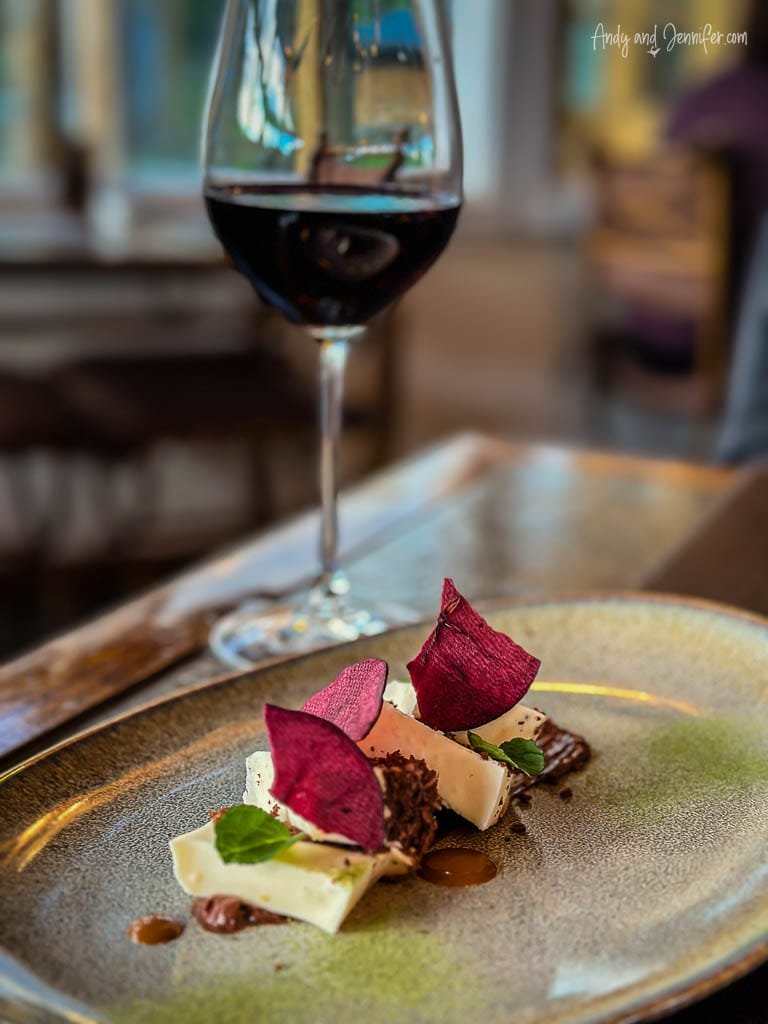
One experience we regretted missing last year was the “Lamb Experience,” so this time I signed up in advance. It’s a special event where a whole lamb is slow-cooked over a fire all day in the center of the room. There are roasted vegetables, wine, dessert, and hot mulled wine. Even though lamb isn’t my favorite, the experience was incredible.
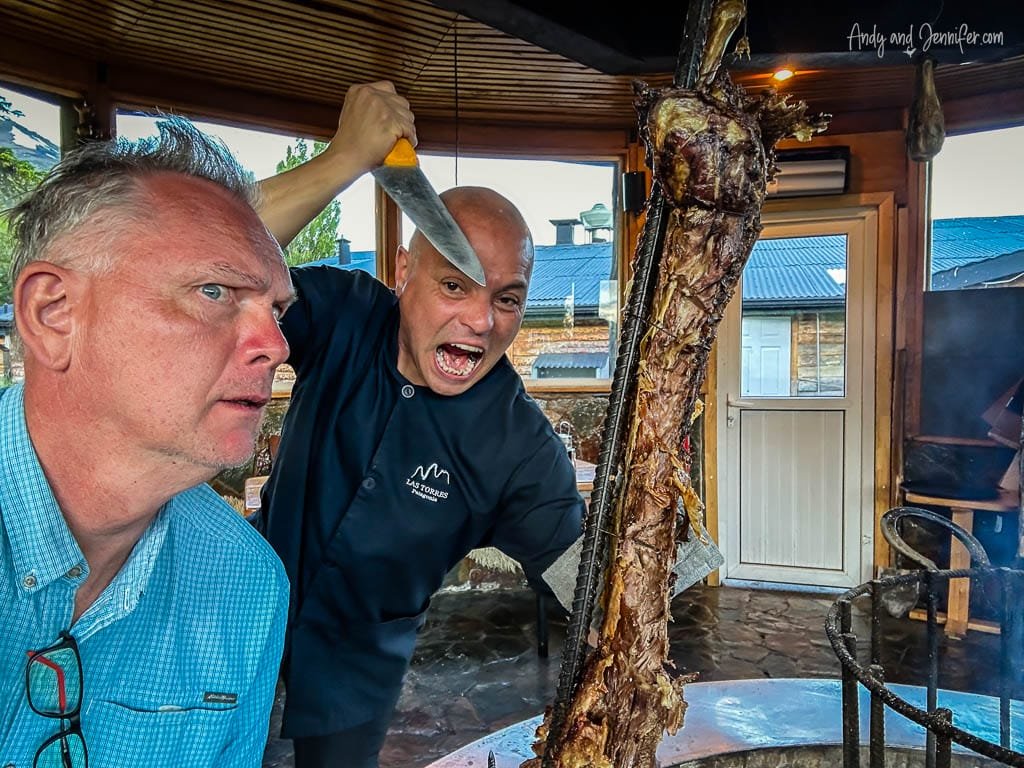
We did a few hikes on our own.


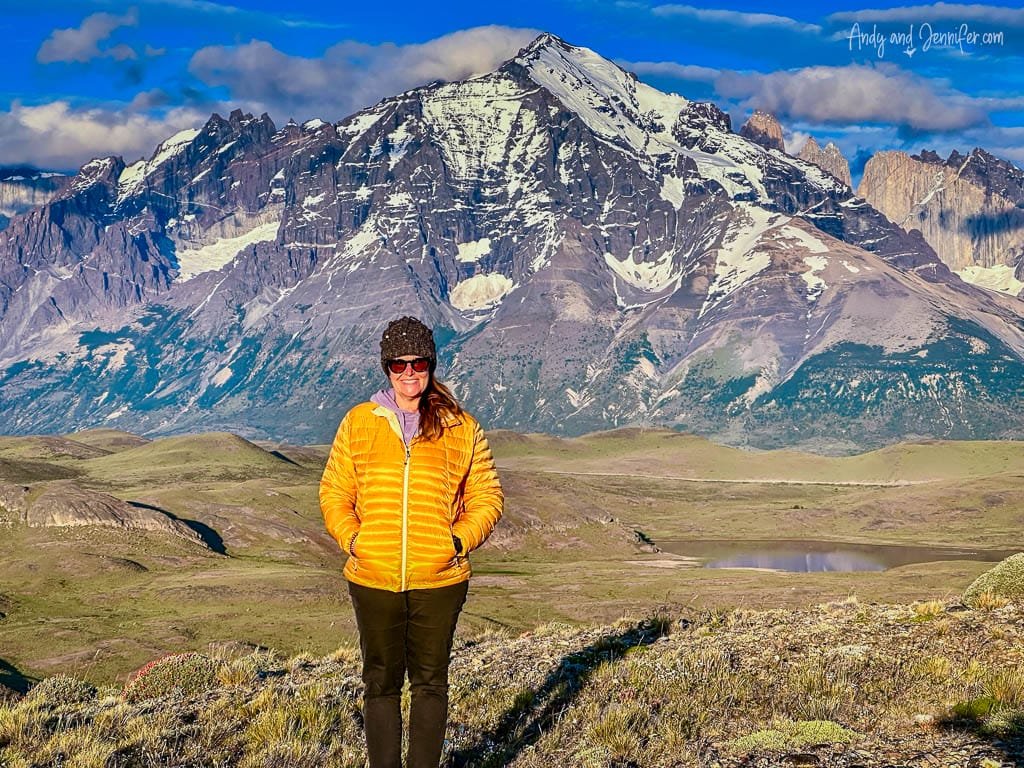


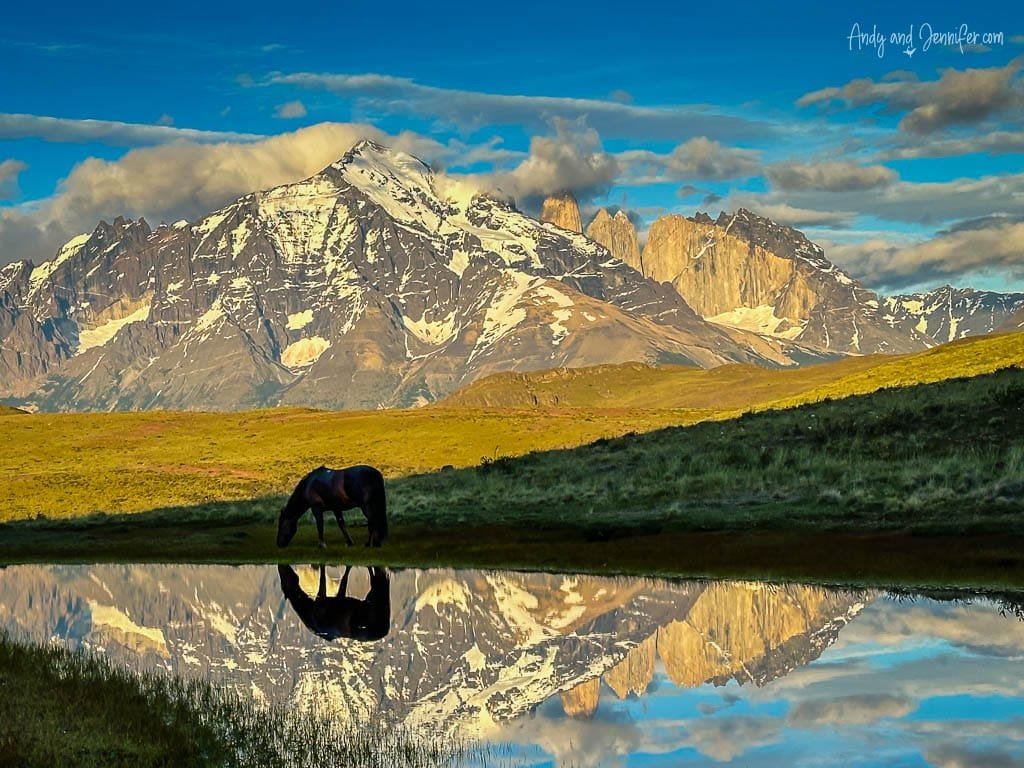
We also drove to Lake Pehoé for a stunning sunrise at 5:30 a.m. (great views, but zero degrees so we didn’t stay long).
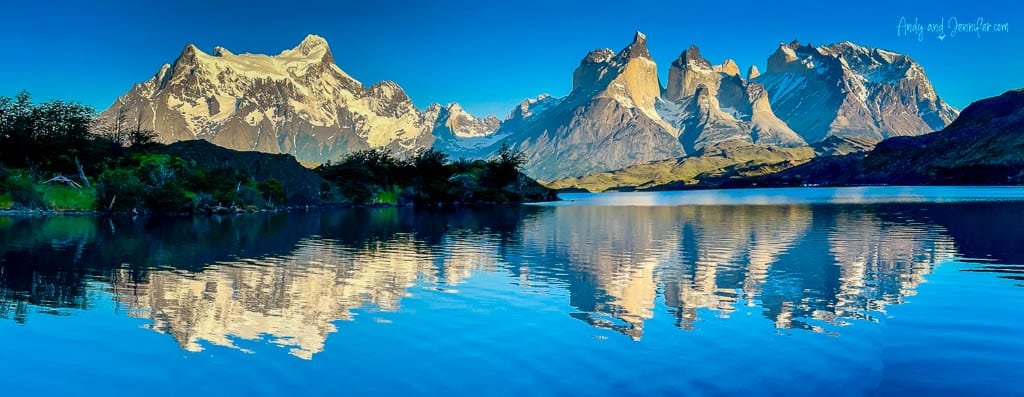
The one excursion we signed up for was a combination horseback ride and hike to the Las Torres viewpoint. We were warned it was a challenging ride and asked about our experience with narrow trails and heights. I mentioned we’d done Cerro Paine with them last year, which seemed sufficient. “We’ll ride for a little over an hour, then leave the horses for a 2.5 km hike. It’s kind of steep at the end,” they said. This was either a mistranslation or the understatement of the century.

We met our guide early the next morning and were joined by a lovely French couple. My horse was named Pura Pinta, and Andy’s horse sounded like “Mira Lehorse.” The horses were well-trained trail horses, content to follow the one in front without issue. They loved to trot, only stopping when the horse ahead did. We crossed rivers and passed through dense forests of fire bush. The trail became steep and narrow, with dramatic drop-offs.
After an hour and a half, we dismounted at Refugio Chileno, which offers camping facilities and a dining area—where you can buy a small bottle of Gatorade for $14. The mosquitos were intense, but fortunately, they didn’t bite. Somehow, Andy managed to fall into a pile of horse manure while dismounting his horse. The weather was unexpectedly warm. I was dressed for a chilly horseback ride (jeans, Smartwool top, North Face fleece) and not a sunny, 20°C (68°F) hike.

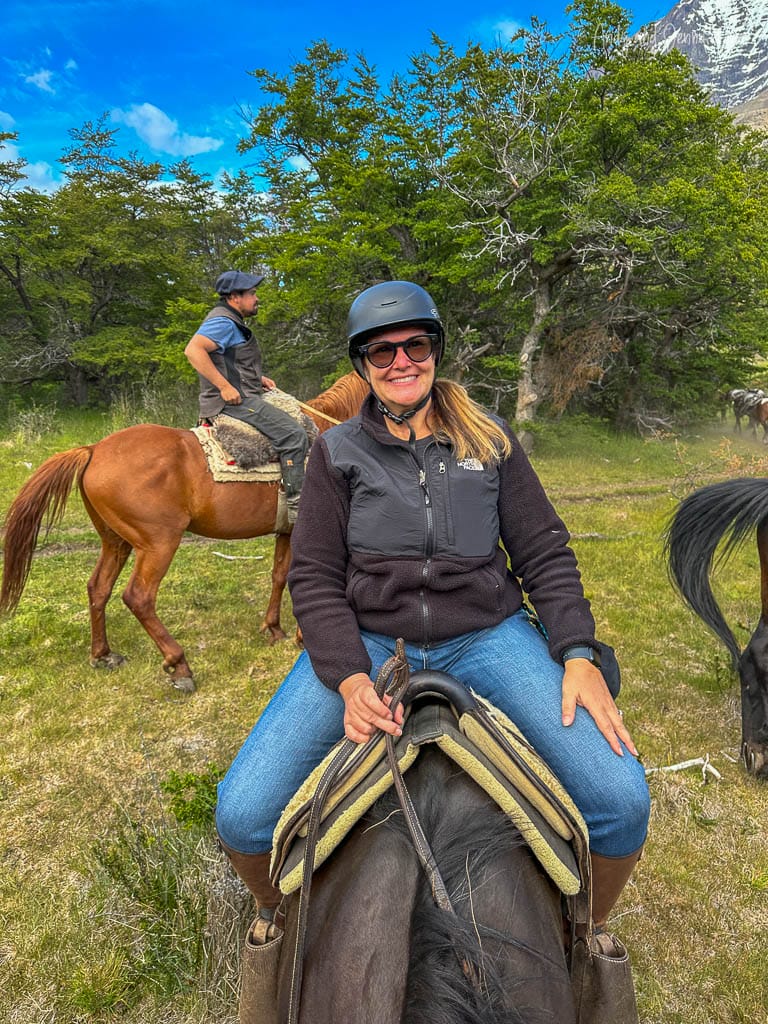
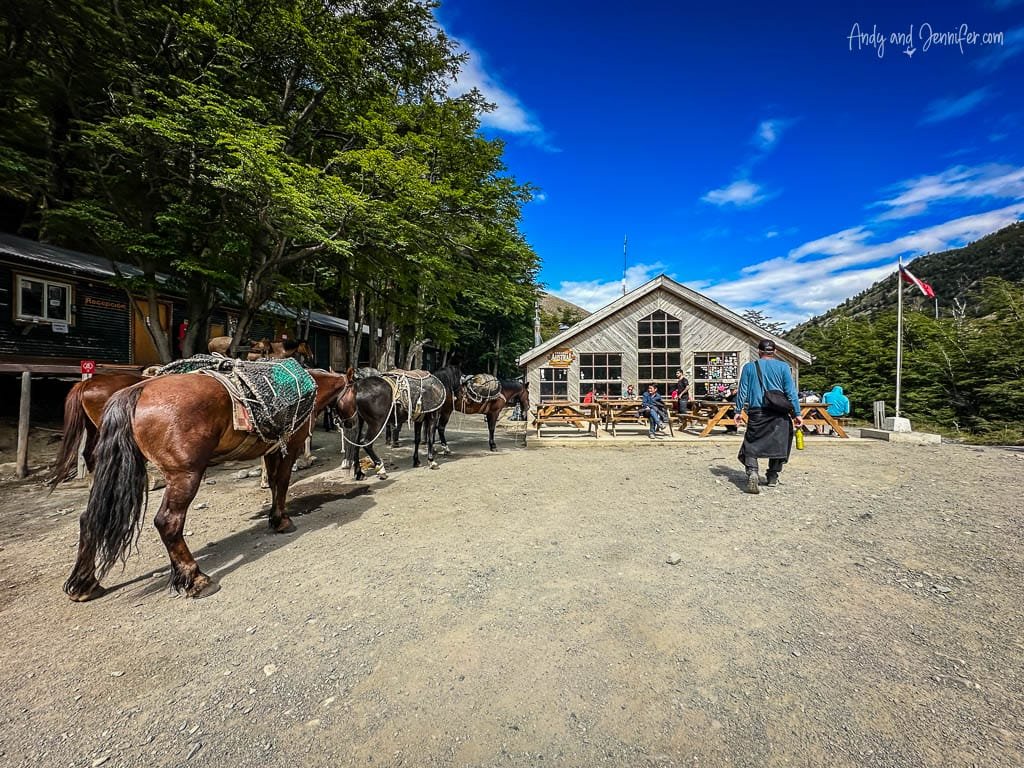
The first part of the hike was what our guide called “Patagonian flat,” meaning lots of ups and downs through beech forests and small river crossings. Our guide recommended refilling water bottles from the rivers and waterfalls. It sounded like a recipe for a travel illness, but dehydration wasn’t an option, so we went for it. I was thankful we bought hats at the visitor centre because the sun was intense.

The final stretch was the steep moraine—a massive boulder field with seemingly endless uphill paths. Descending hikers kept telling us we were 20 minutes from the top. Either they were lying or trying to keep me from turning back. The other two in our group forged ahead while our guide juggled assisting them and me, trailing far behind. At one point, I seriously considered turning around, but I pushed through, slowly, with lots of water. The total hike was not 2.5 km but nearly 6 km with a 700-meter altitude gain—one way. But the views of the glacial lake and the towering granite monoliths were worth every step.
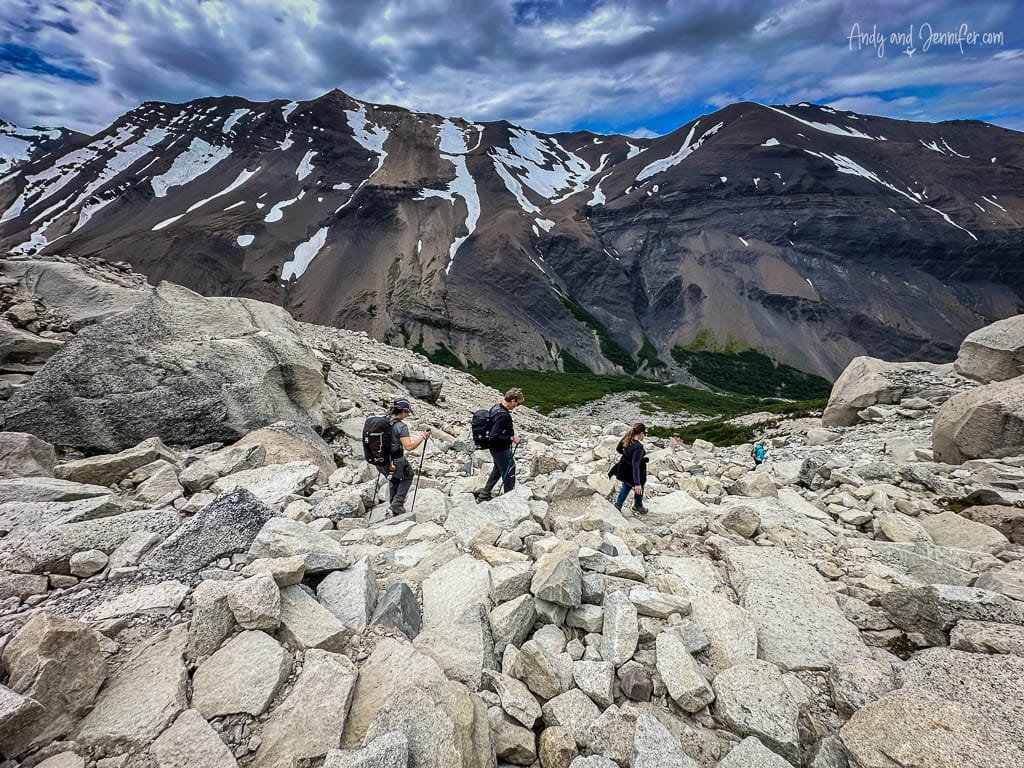
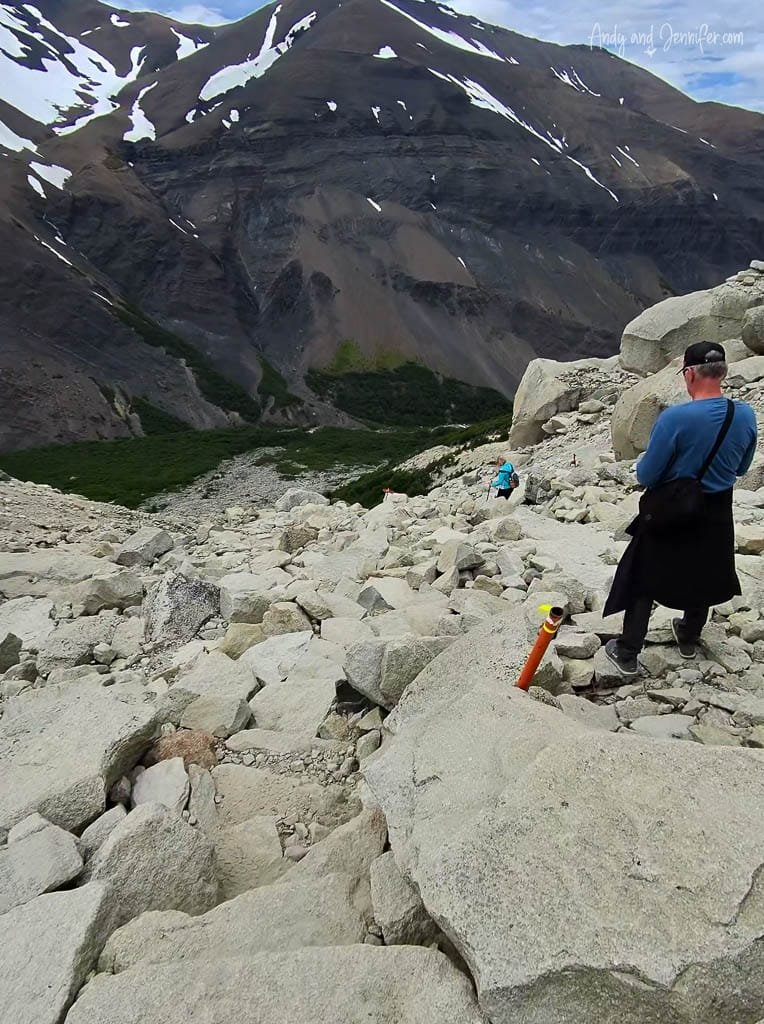

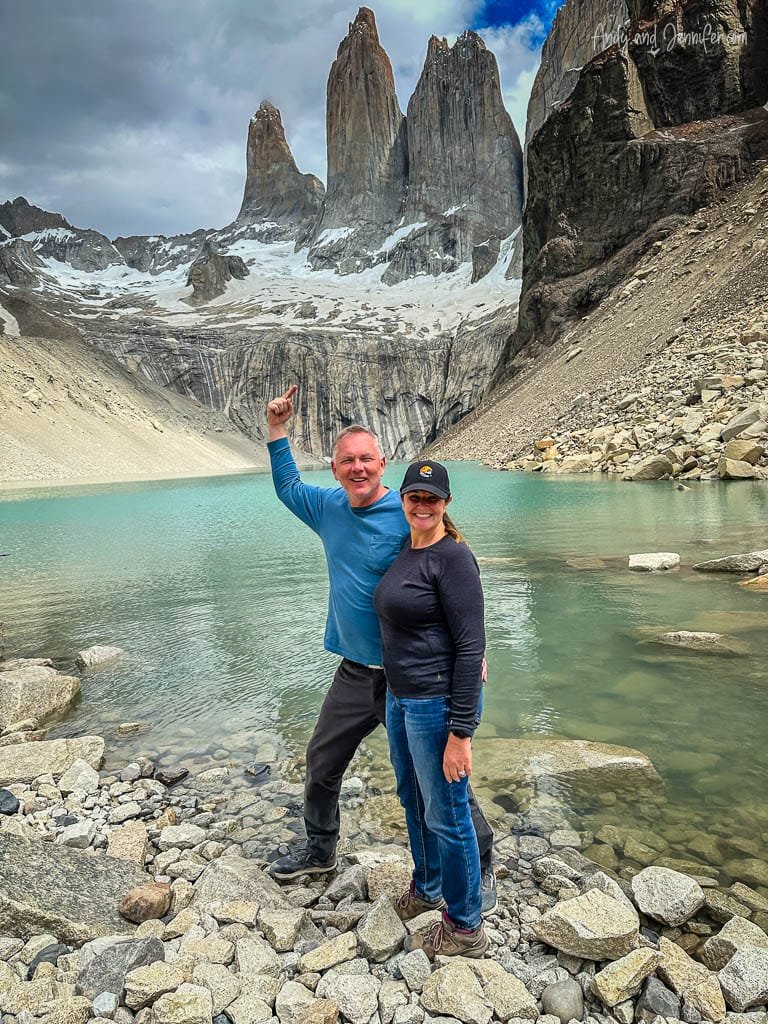
The descent was quicker, though now we were the ones telling others they were “almost there.” This time, I led the group. I’m definitely better at descending than climbing.

Seeing the horses at Refugio Chileno was a huge relief—I couldn’t imagine hiking another 2–3 hours back to the lodge. The horses, eager to return, galloped most of the way back.

Would we do it again? No. But are we glad we did it? Absolutely.
Next up –> Puma Tracking at Eco Camp Patagonia
We’re Andy and Jennifer—two former corporate executives who chose long ago to prioritise experiences over stuff while pursuing our passions for travel and photography. From the Arctic to Antarctica, and most places in between, we’ve captured the world through our lenses and love sharing those stories. Our careers gave us the means, but our purpose is inspiring others to explore and helping people create images they’re proud of.

